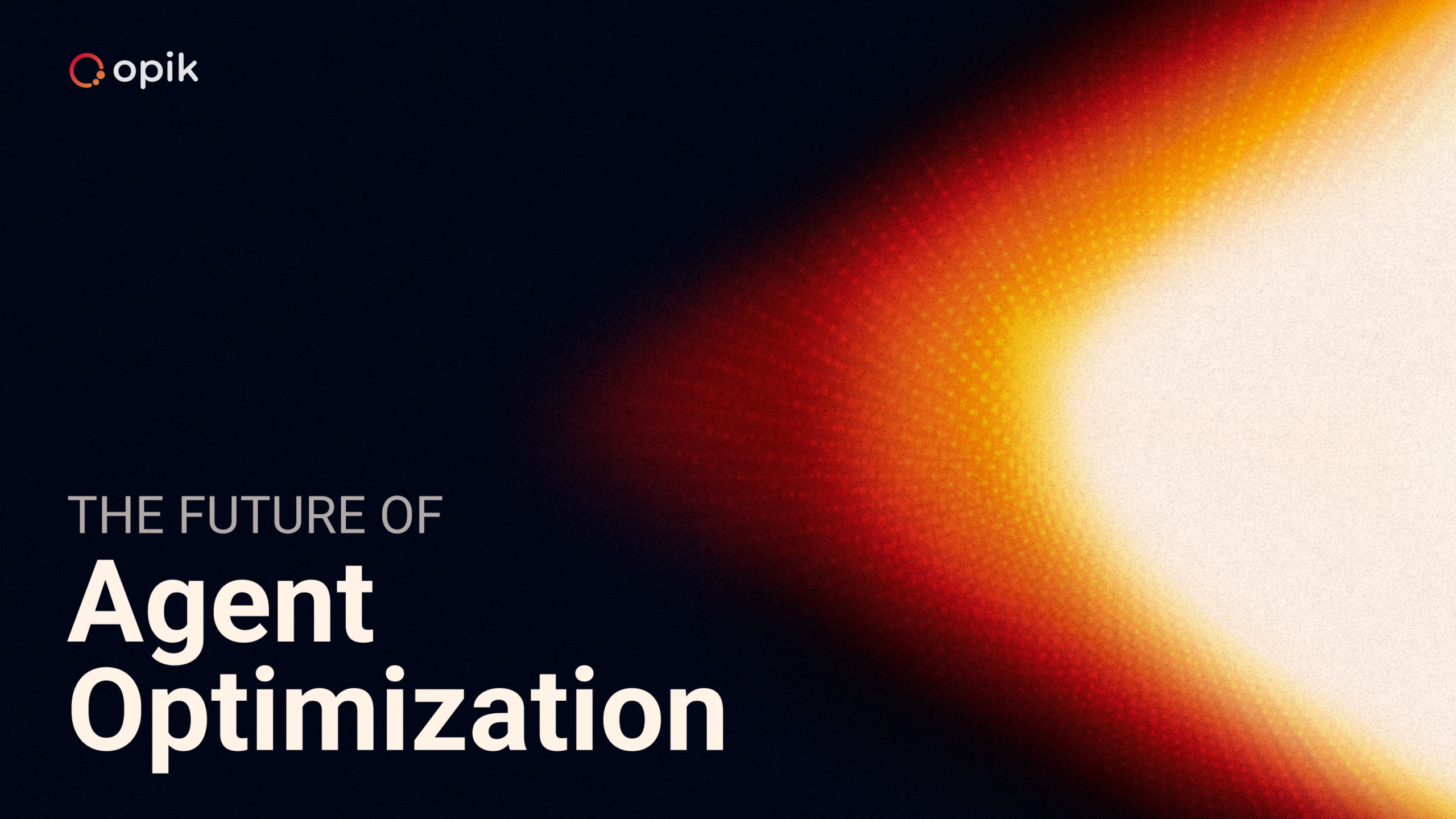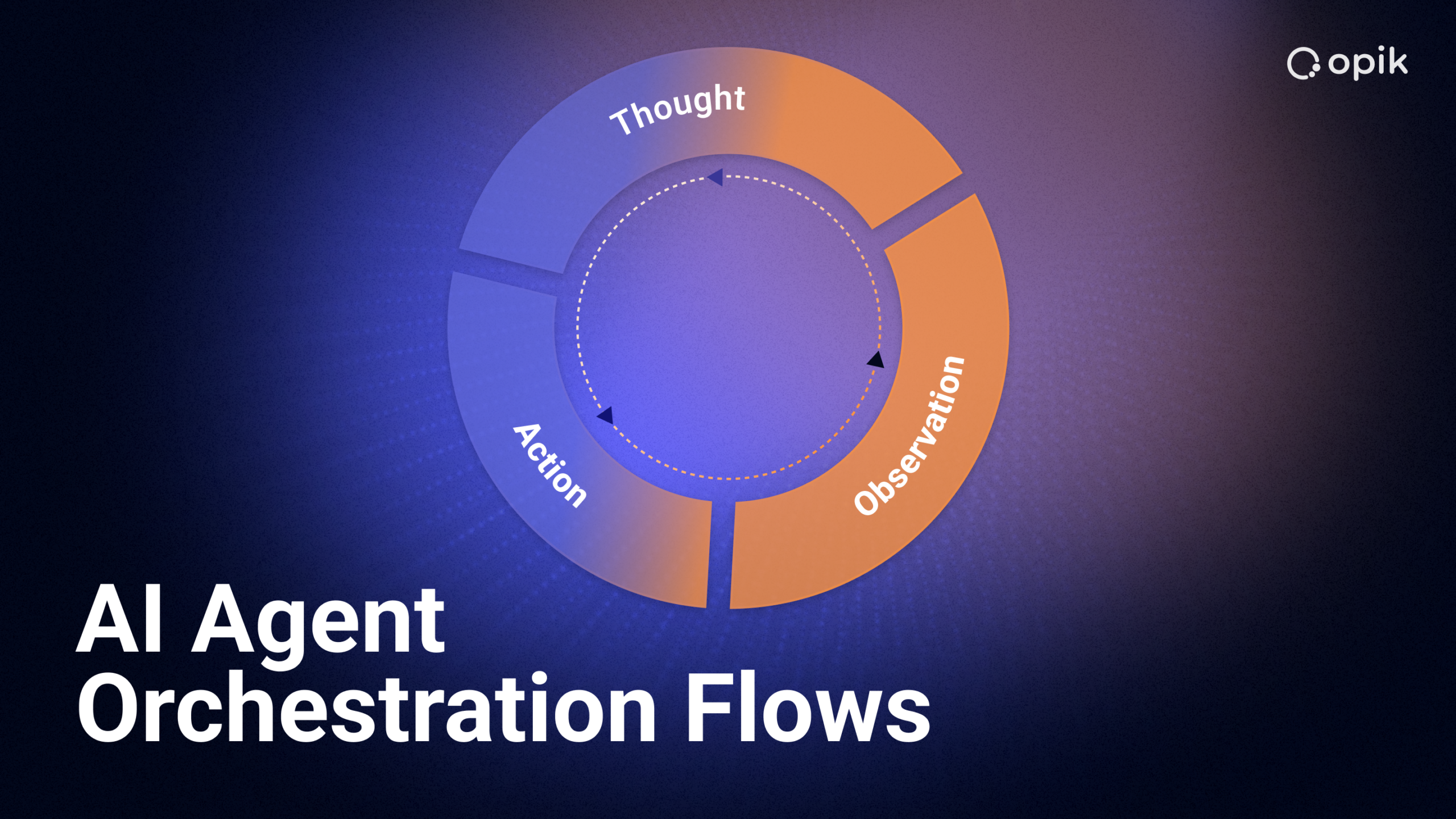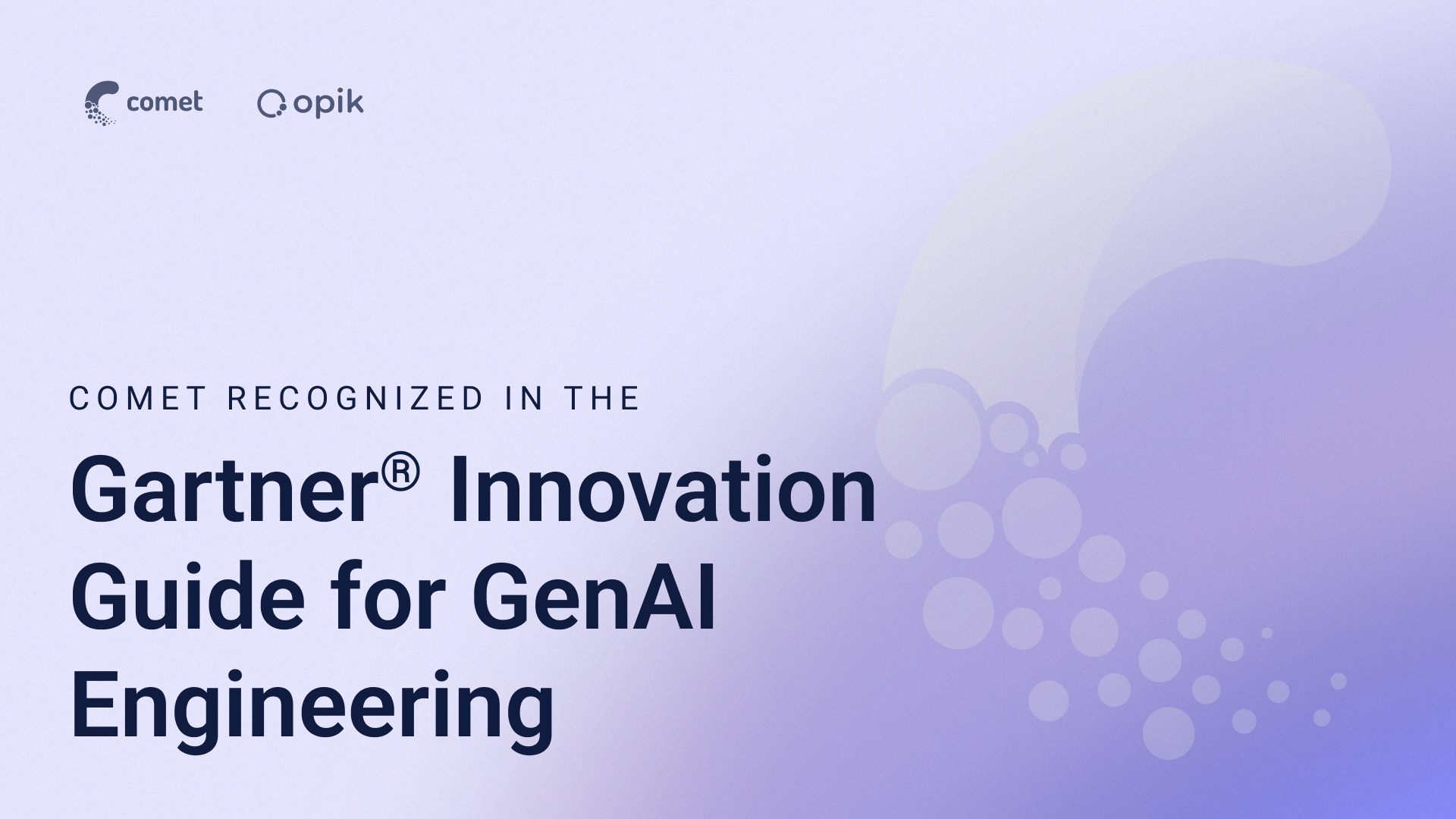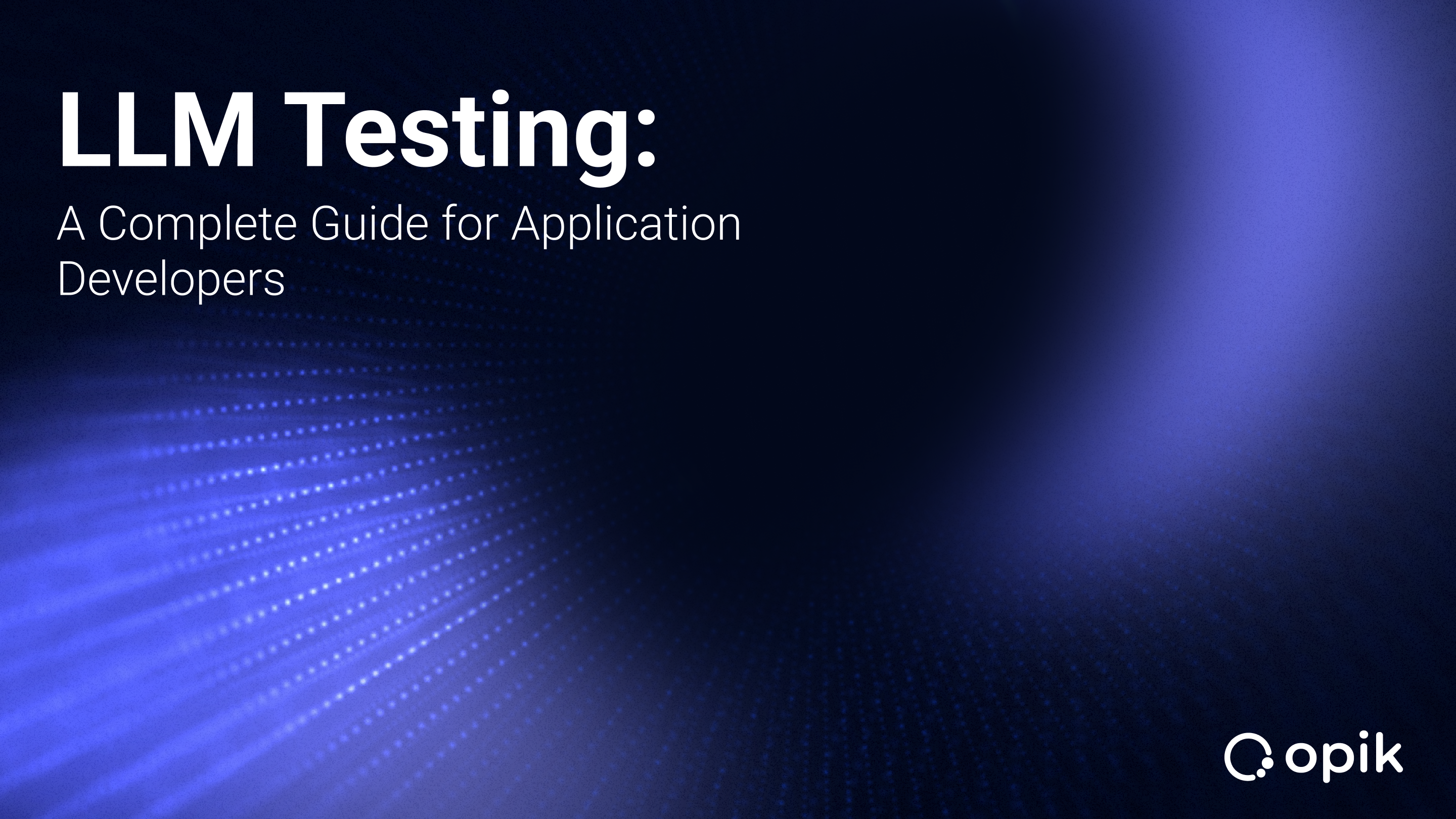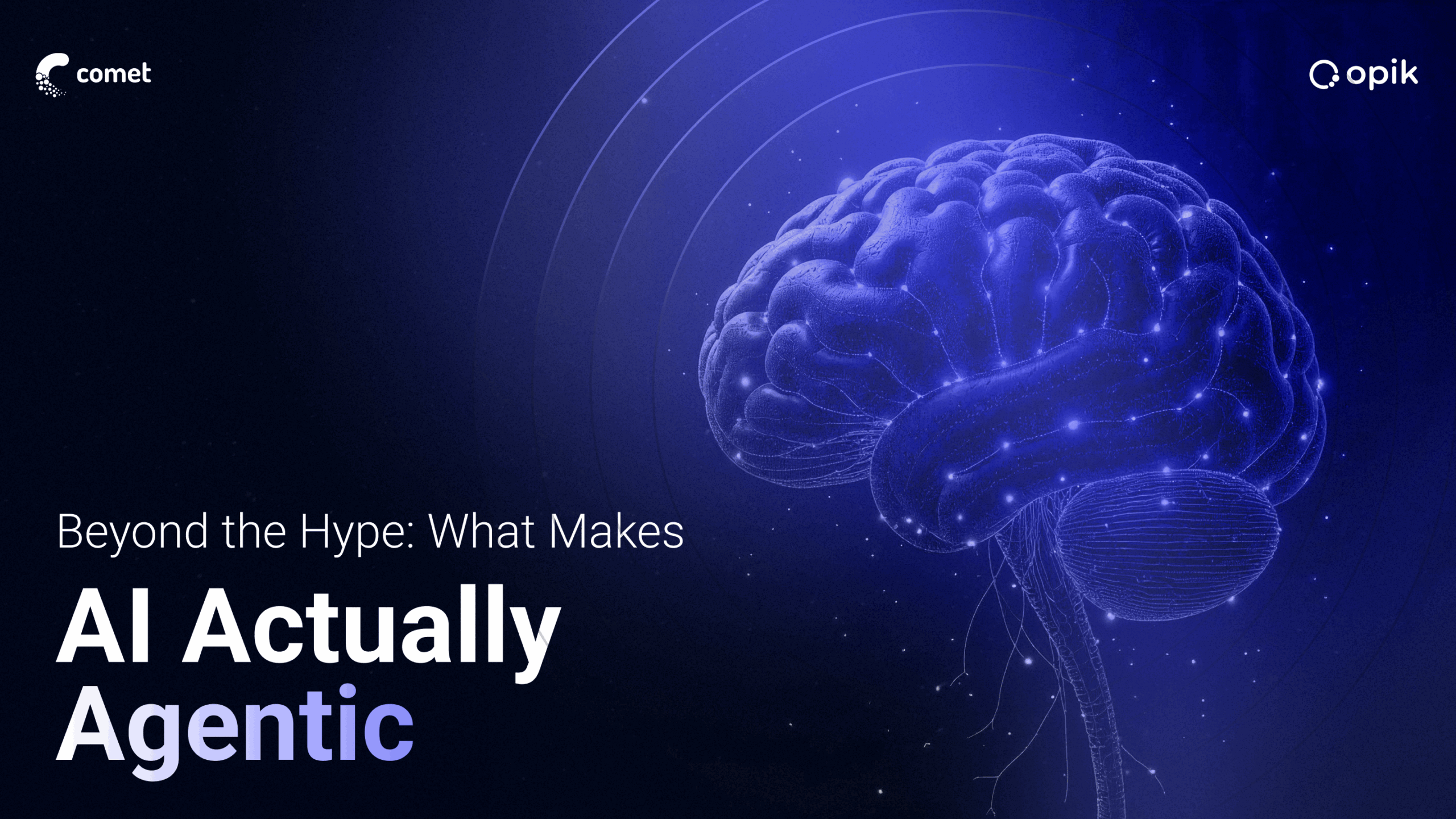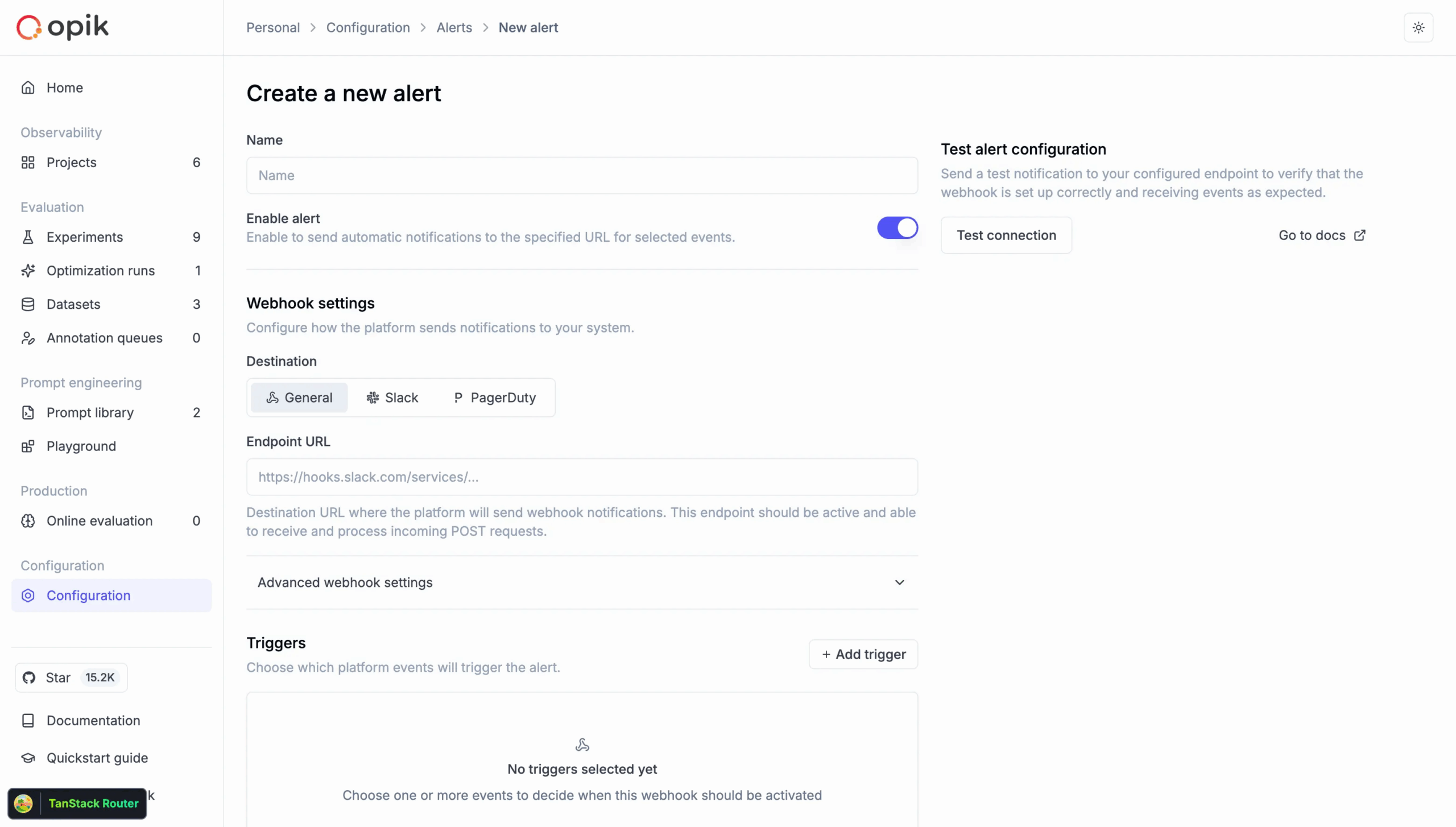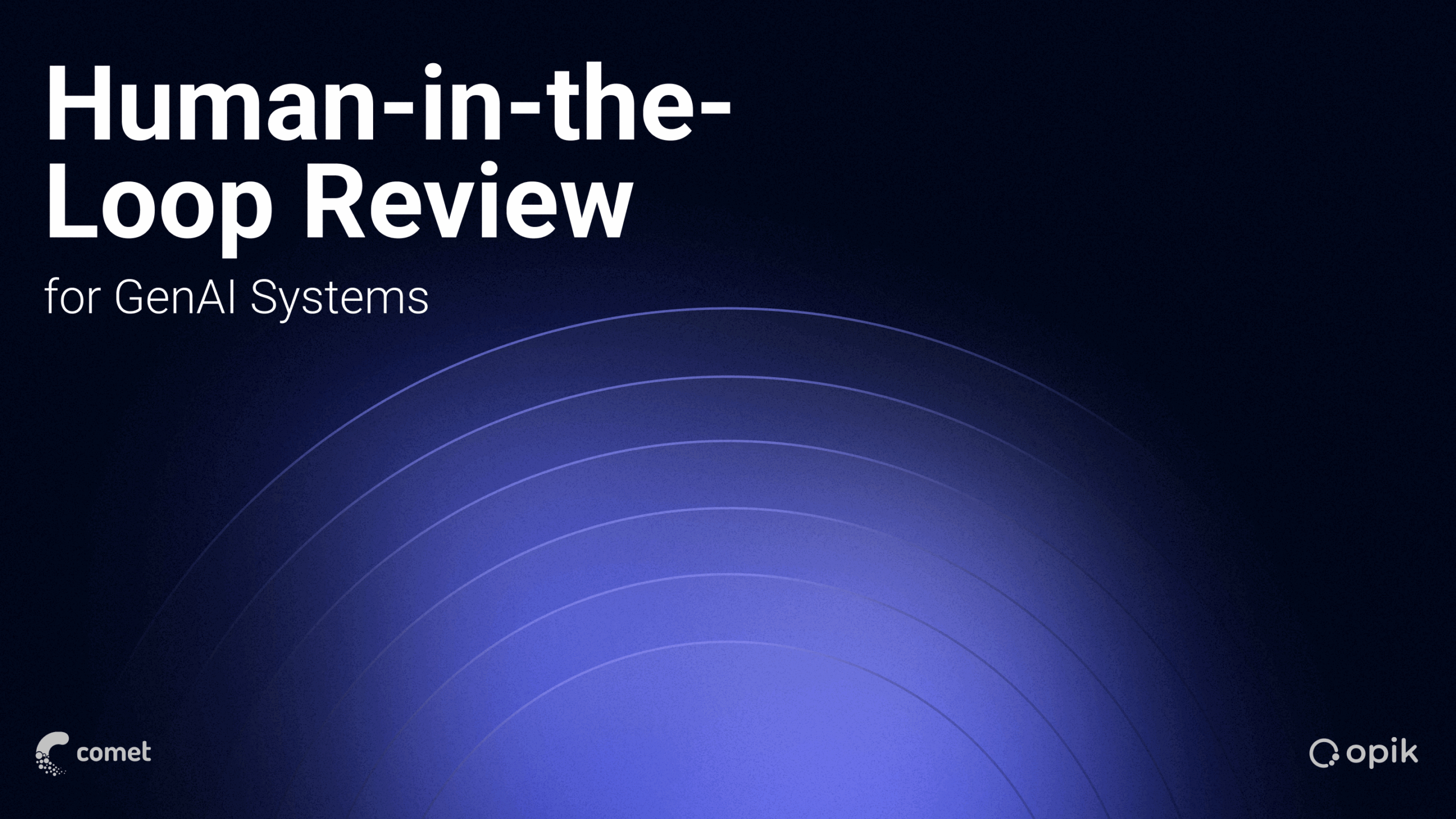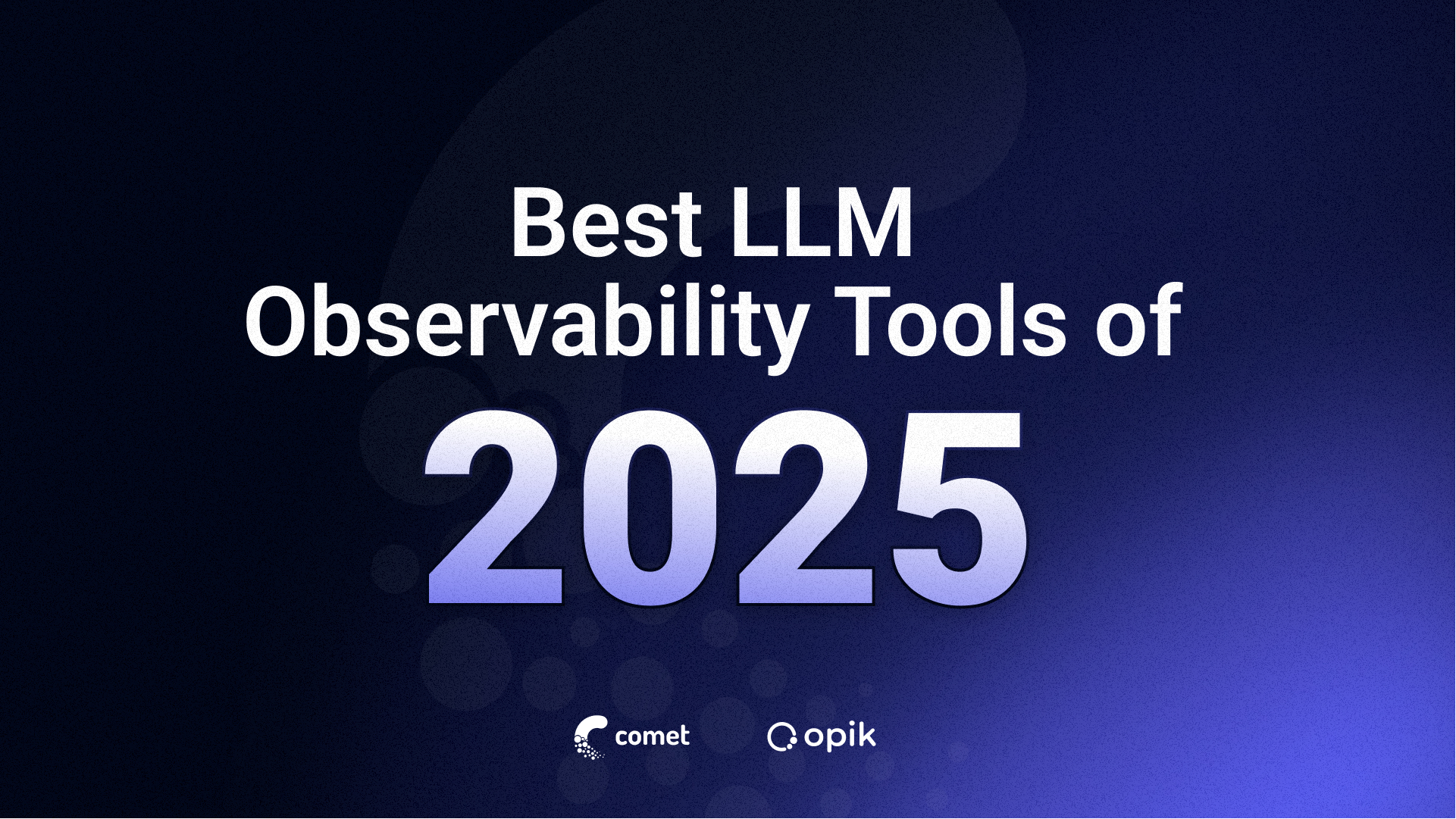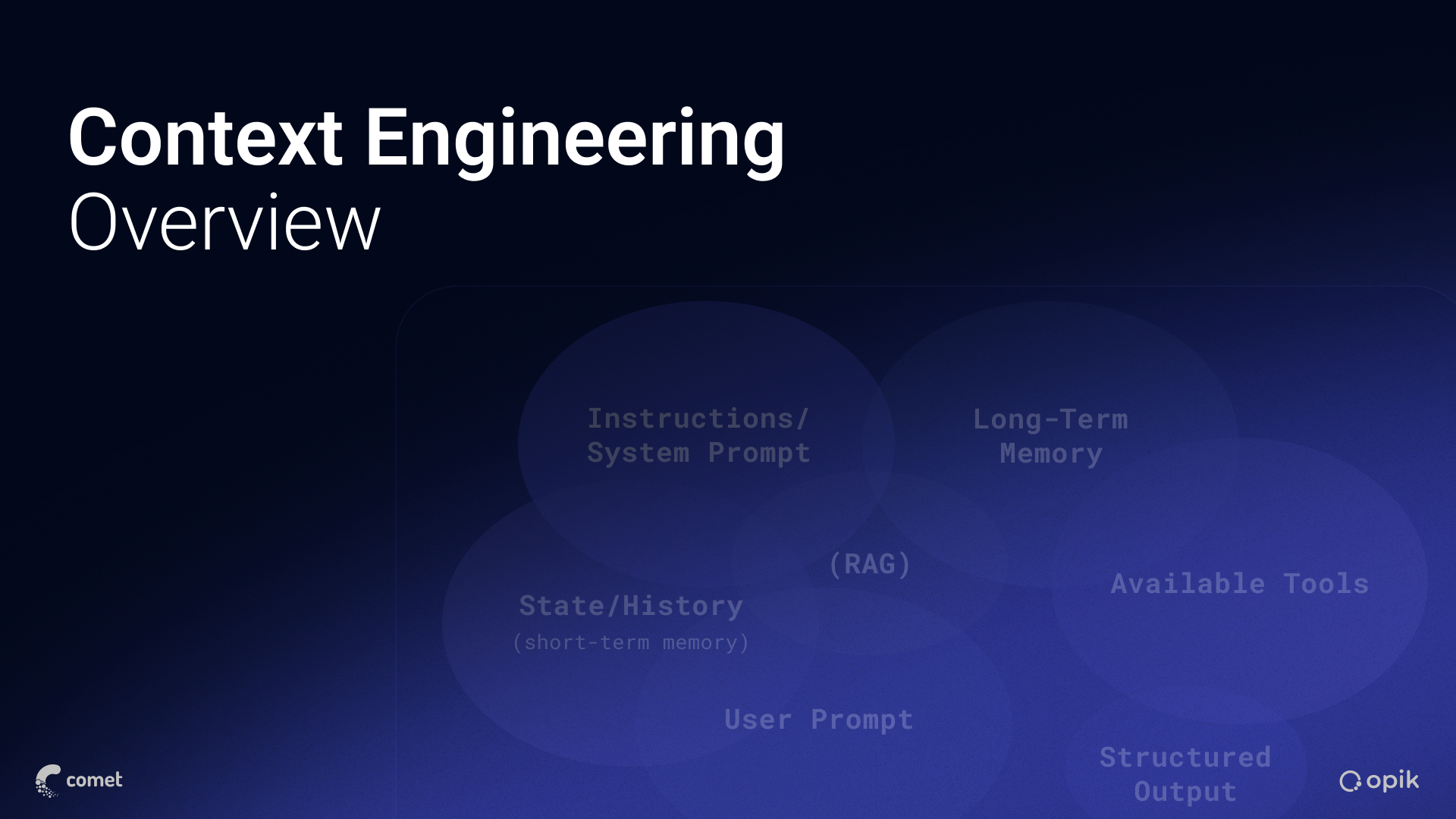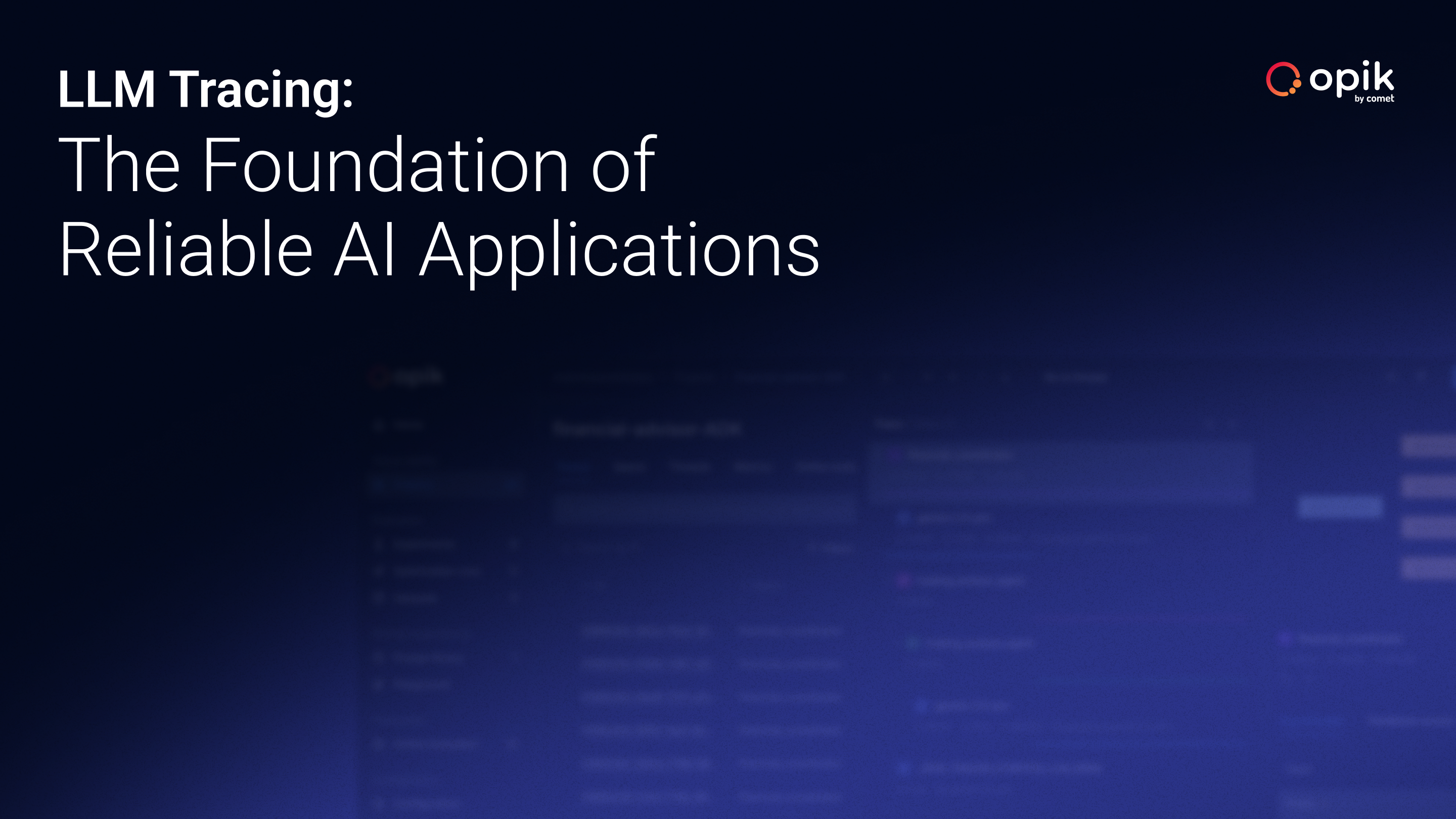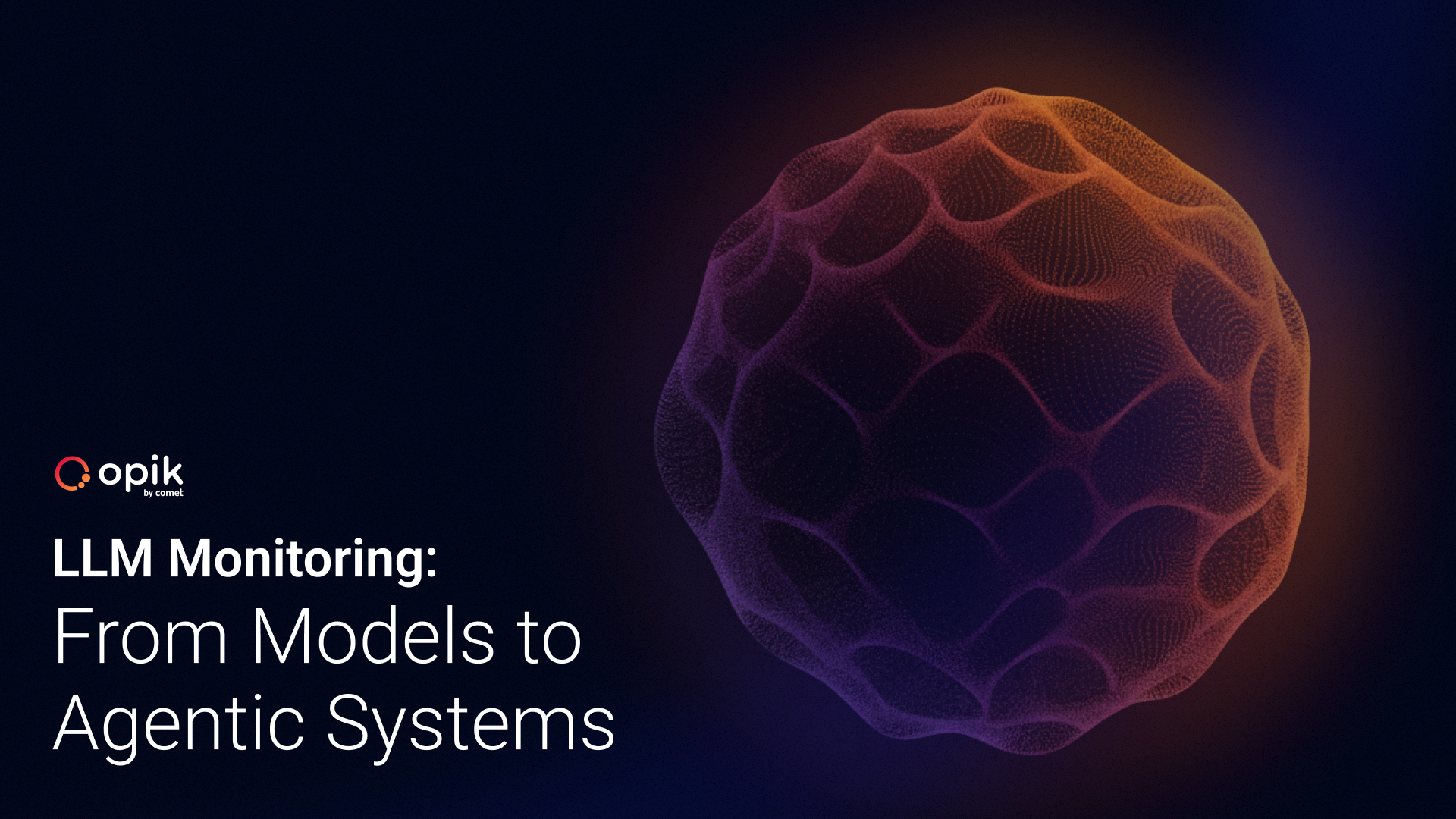-
Agent Orchestration Explained
The moment an LLM can decide which tool to call next, you’ve crossed a threshold. You’ve moved from building a…
-
Comet Recognized as an Emerging Specialist in the 2025 Gartner® Innovation Guide for Generative AI Engineering
We’re excited to share that Comet has been named in the latest Gartner Innovation Guide for Generative AI Engineering, for…
-
LLM Testing: A Complete Guide for Application Developers
In July 2025, tech founder Jason Lemkin watched in horror as an AI coding assistant deleted a live company database,…
-
The Definitive Guide to Agentic AI: What AI Agents Actually Are and How to Build Them for Production
What if your AI system was more than a chatbot? What if it could book flights, debug code, or process…
-
Opik Release Highlights: Real-Time Alerts, No-Code Evaluation, & Generative Prompt Tools
As LLM applications and agents scale, visibility and iteration speed matter more than ever. This month’s Opik updates close the…
-
Human-in-the-Loop Review Workflows for LLM Applications & Agents
You’ve been testing a new AI assistant. It sounds confident, reasons step-by-step, cites sources, and handles 90% of real user…
-
Best LLM Observability Tools of 2025: Top Platforms & Features
LLM applications are everywhere now, and they’re fundamentally different from traditional software. They’re non-deterministic. They hallucinate. They can fail in…
-
Context Engineering: The Discipline Behind Reliable LLM Applications & Agents
Teams cannot ship dependable LLM systems with prompt templates alone. Model outputs depend on the full set of instructions, facts,…
-
LLM Tracing: The Foundation of Reliable AI Applications
Your RAG pipeline works perfectly in testing. You’ve validated the retrieval logic, tuned the prompts, and confirmed the model returns…
-
LLM Monitoring: From Models to Agentic Systems
As software teams entrust a growing number of tasks to large language models (LLMs), LLM monitoring has become a vital…
Open-source AI observability & optimization
StarComet Blog
-
Announcing the Future of AI Engineering: Self-Optimizing Agents
When ChatGPT launched in 2022, generative AI seemed like magic. With a simple API call and prompt, any application could…
Get started today for free.
You don’t need a credit card to sign up, and your Comet account comes with a generous free tier you can actually use—for as long as you like.

